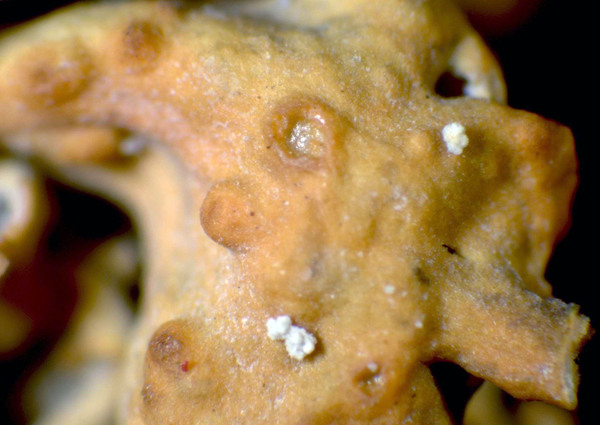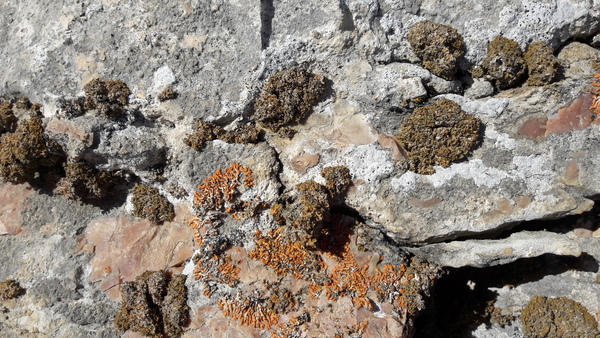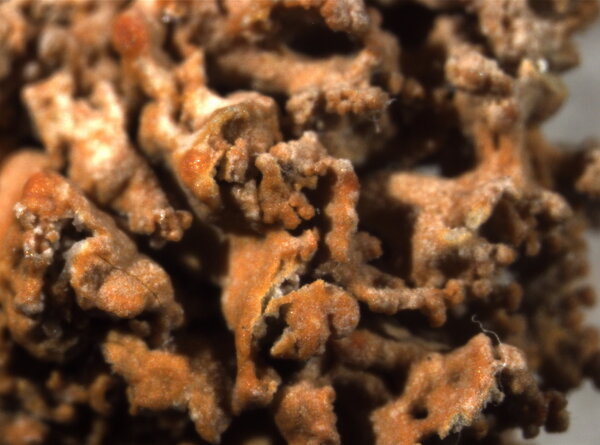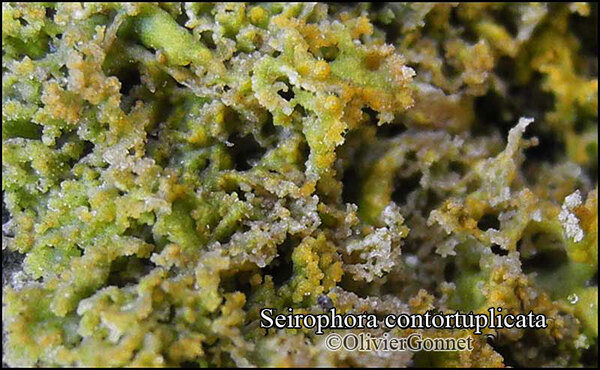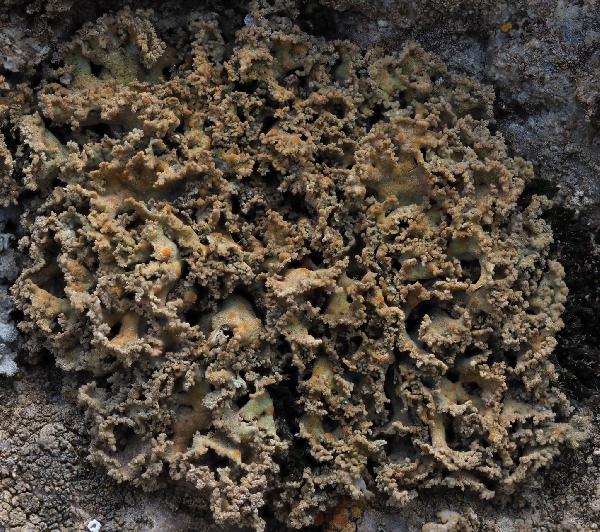Seirophora contortuplicata (Ach.) Frödén
in Frödén & Lassen, Lichenologist, 36: 29, 2004. Basionym: Parmelia contortuplicata Ach. - Syn. Meth. Lich.: 210, 1814.
Synonyms: Teloschistes contortuplicatus (Ach.) Clauzade & Rondon; Xanthaptychia contortuplicata (Ach.) S. Y. Kondr. & S. Ravera; Xanthoria contortuplicata (Ach.) Boistel
Description: Thallus subfruticose to subfoliose, up to 1.5 cm tall, forming small, densely branched masses, the lobes fragile, flattened or usually convex, adpressed to slightly ascending, 0.5-2 mm wide, mostly irregularly branched, attached by a basal holdfast and with short lateral lobes, the tips of secondary branches sometimes granulose-blastidiate. Upper surface more or less deep orange, but often grey-orange to grey in shade-forms and in older specimens, smooth or finely short-haired, especially at lobe tips; lower surface pale grey to yellow at lobe tips, often cracked exposing the medulla, with hyphal strands forming a reticulate pattern. Upper cortex of longitudinally arranged hyphae; medulla interrupted by hyphal strands with algae; lower cortex prosoplectenchymatous, with thin patches of medulla exposed where the cortex is missing. Apothecia very rare, lecanorine, laminal and subterminal, often stipitate, 1-3 mm across, with a dark orange, at first strongly concave then flat disc and a thick, raised thalline margin. Epithecium orange, K+ purple-red, hymenium and hypothecium colourless. Asci 8- spored, clavate, functionally unitunicate, apically thickened with a broad internal beak, the inner part of apex and external cap I+ blue, Teloschistes-type. Ascospores 2-celled, polarilocular, hyaline, oblong to narrowly ellipsoid, (10.5-)11-15(-17) x 6-8(-9) µm, the equatorial thickening (“septum”) 1.5-2.5 µm. Pycnidia large, projecting, laminal or subterminal, orange to reddish orange, to 0.3 mm wide. Conidia hyaline, simple, ellipsoid when young, narrowly ellipsoid to bacilliform when mature, 3-4 x 1.5-2 µm. Photobiont chlorococcoid. Spot tests: thallus K+ purple red, C-, KC-, P-. Chemistry: parietin (major), fallacinal, teloschistin, and parietinic acid (all minor), and emodin (minor).
Growth form: Fruticose
Substrata: rocks
Photobiont: green algae other than Trentepohlia
Reproductive strategy: mainly asexual, by soredia, or soredia-like structures (e.g. blastidia)
Subcontinental: restricted to areas with a dry-subcontinental climate (e.g. dry Alpine valleys, parts of Mediterranean Italy)
In underhangs rarely wetted by rain
Commonnes-rarity: (info)
Alpine belt: rare
Subalpine belt: rather rare
Montane belt: very rare
Dry submediterranean belt: absent
Humid submediterranean belt: absent
Padanian area: absent
pH of the substrata:
1 2 3 4 5
Solar irradiation:
1 2 3 4 5
Aridity:
1 2 3 4 5
Eutrophication:
1 2 3 4 5
Poleotolerance:
0 1 2 3
Altitudinal distribution:
1 2 3 4 5 6
Rarity
absent
extremely rare
very rare
rare
rather rare
rather common
common
very common
extremely common
Loading data...
Occurrence data
Predictive map
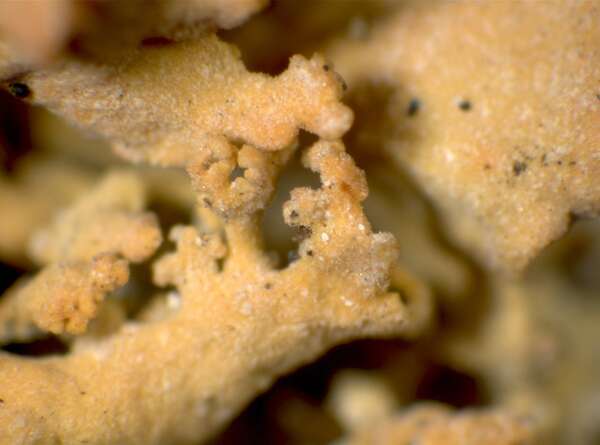
P.L. Nimis; Owner: Department of Life Sciences, University of Trieste
Herbarium: TSB (23761)
2001/12/11
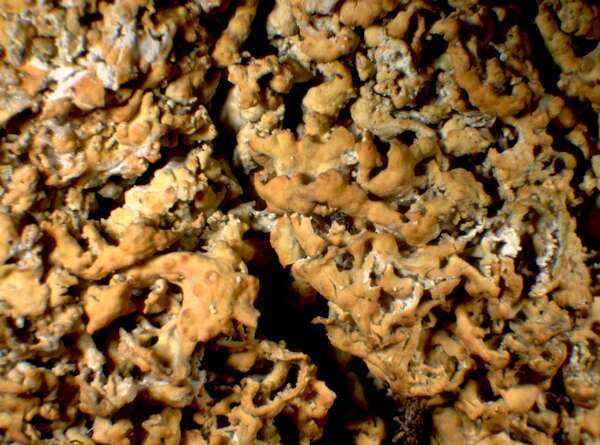
P.L. Nimis; Owner: Department of Life Sciences, University of Trieste
Herbarium: TSB (23761)
2001/12/11
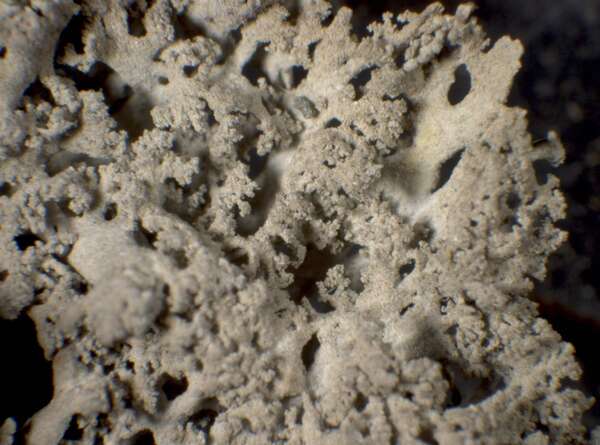
P.L. Nimis; Owner: Department of Life Sciences, University of Trieste
Herbarium: TSB (34906)
2001/12/11
a grey shade-form
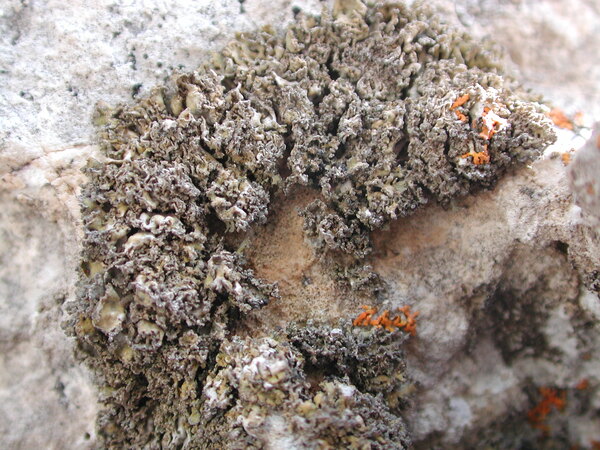
Juri Nascimbene - CC BY-SA 4.0; Owner: ITALIC - Dyades Project - Dept. of Life Sciences, University of Trieste
Italy, Trentino-Alto Adige, Bolzano/Bozen, Sciliar/Schlern
2007
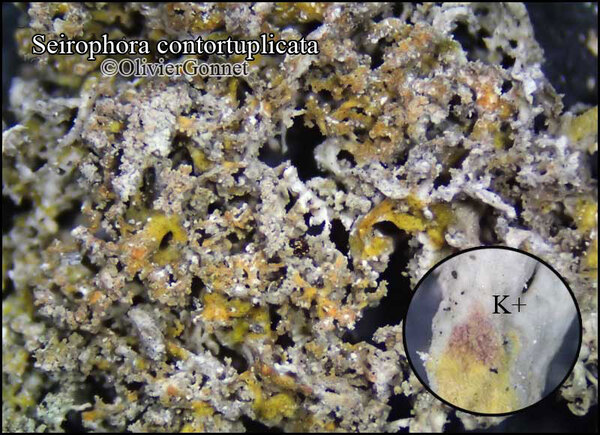
Courtesy Danièle et Olivier Gonnet - Source: https://www.afl-lichenologie.fr/Photos_AFL/Photos_AFL_S/Text_S/Seirophora_contortuplicata.htm
France, session AFL 2014 dans la vallée de l'Ubaye - Alpes de Haute-Provence
Growth form: Fruticose
Substrata: rocks
Photobiont: green algae other than Trentepohlia
Reproductive strategy: mainly asexual, by soredia, or soredia-like structures (e.g. blastidia)
Subcontinental: restricted to areas with a dry-subcontinental climate (e.g. dry Alpine valleys, parts of Mediterranean Italy)
In underhangs rarely wetted by rain
Commonnes-rarity: (info)
Alpine belt: rare
Subalpine belt: rather rare
Montane belt: very rare
Dry submediterranean belt: absent
Humid submediterranean belt: absent
Padanian area: absent
pH of the substrata:
| 1 | 2 | 3 | 4 | 5 |
Solar irradiation:
| 1 | 2 | 3 | 4 | 5 |
Aridity:
| 1 | 2 | 3 | 4 | 5 |
Eutrophication:
| 1 | 2 | 3 | 4 | 5 |
Poleotolerance:
| 0 | 1 | 2 | 3 |
Altitudinal distribution:
| 1 | 2 | 3 | 4 | 5 | 6 |
Rarity
absent
extremely rare
very rare
rare
rather rare
rather common
common
very common
extremely common
Loading data...
Occurrence data
Predictive map

P.L. Nimis; Owner: Department of Life Sciences, University of Trieste
Herbarium: TSB (23761)
2001/12/11

P.L. Nimis; Owner: Department of Life Sciences, University of Trieste
Herbarium: TSB (23761)
2001/12/11

P.L. Nimis; Owner: Department of Life Sciences, University of Trieste
Herbarium: TSB (34906)
2001/12/11
a grey shade-form

Juri Nascimbene - CC BY-SA 4.0; Owner: ITALIC - Dyades Project - Dept. of Life Sciences, University of Trieste
Italy, Trentino-Alto Adige, Bolzano/Bozen, Sciliar/Schlern
2007



